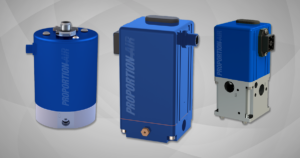Congress Extends 2015 Deadline for Positive Train Control
Positive Train Control Deadline Approaching
It’s been nearly 8 years since Congress passed the Rail Safety Improvement Act requiring railroad operators to implement Positive Train Control by the end of 2015. The act was designed to prevent derailments and collisions, as PTC technology is intended to automatically slow or stop passenger trains or cargo trains carrying hazardous substances.
However, most train companies haven’t been able to implement the technology in time for the January 2016 deadline. At the time it was passed, the technology to implement PTC didn’t exist, according to the Association of American Railroads. As a result, railroad companies were far behind schedule for rolling out the new system and concerned about what would happen on Dec. 31, the mandated deadline for installing PTC.
The PTC law had stated that operators who failed to comply by the deadline would be subject to daily fines in January 2016, and many companies considered shutting down temporarily, as an alternative to paying hefty fees.
Faced with the possible disruption of industrial and commuter rail service, Congress voted to extend the Dec. 31 deadline by three years, or up to five years, if a company receives a special extension. But three years may not be enough time to fully implement PTC.
How PTC Technology Works
PTC technology is composed of three main components:
An onboard system that activates the air brakes to reduce speed or prevent a train from entering a section of track
A trackside system that monitors switches and track circuits in order to authorize a train’s movement
A remote server that collects information from onboard and trackside systems from all sections of railroad and trains and transmits authorization for trains to proceed onto new sections of track
One of the main challenges in implementing this technology is the number of different train companies, as well as different ownership of tracks (Amtrak, for example, owns 3 percent of the tracks it travels, leasing the rest from freight and commuter lines). In order for PTC to function, every company and track owner must ensure that the technology they’re using is compatible with every other company’s technology.
Railroads have reportedly had difficulty getting government permission for the thousands of antennas it needs to install along tracks. And in unpopulated areas, there are thousands of miles of “dark territory” – tracks that have no electricity, where dispatchers communicate track authorization to train operators via radio. All dark territory tracks will need electricity, in order for PTC to work.
Making Progress
The Association of American Railroads reported that as of August 2015, five railroads reported PTC was about 27 percent complete, at a cost of $1.354 billion, not including operating or maintenance expenses. Amtrak reports it will be fully PTC-compliant by the end of the year for the sections of track it owns between Washington, D.C., and Boston. However, East Coast railroads will likely be a patchwork of PTC-enabled tracks for at least a few more years.

 March Newsletter: Food Processing & Packaging
March Newsletter: Food Processing & Packaging  We’ve got the blues – and it’s a good thing
We’ve got the blues – and it’s a good thing